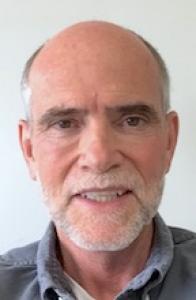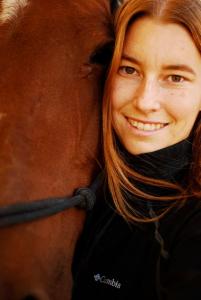Quick Links
2021 IEOC/an-vision, Inc. Equine Ophthalmology Consortium
an-vision, Inc./IEOC Equine
Ophthalmology Consortium Symposium
The 2021 Virtual Symposium turned out to be a great conference, the largest we've ever held, with 148 registered attendees! Thank you for choosing to participate.
'Ophthalmic Pearls' have been provided by Symposium Chairperson, Dr. Ann Dwyer, on behalf of the Planning Committee. These are notes about the Q&A and are supplemental to the proceedings.
Our State of the Art speakers were delightful and provided enlightening lectures/presentations. Planning Committee member, Dr. Ann Dwyer,provided a 'hot topics' list of discussions that arose during the live Q&A. As a membership benefit, ALL members can also access the digital proceedings of the meeting which provides the notes of the invited speakers, abstracts and case report data (for this or any previous symposium), here is the link, but members must first be signed into the membership portal to view or download. Contact us if you need help signing in.
Thank you to everyone who attended and/or supported the meeting at some level. Don't forget to enjoy the proceedings!
Keynote Speakers Paul E. Miller, DVM, DACVO
Paul E. Miller, DVM, DACVO
Clinical Professor of Comparative Ophthalmology
School of Veterinary Medicine
University of Wisconsin-Madison
Biography:
Dr. Miller is a Clinical Professor of Comparative Ophthalmology at the School of Veterinary Medicine, University of Wisconsin-Madison and a Diplomate of the American College of Veterinary Ophthalmologists. He is a former President of the American College of Veterinary Ophthalmologists and also serves on the editorial board for the journal Veterinary Ophthalmology. He main research interests are glaucoma, the visual capabilities of animals, and ocular toxicology. He has given over 450 scientific and continuing education presentations, authored more than 170 scientific publications, and edits the textbook Fundamentals of Veterinary Ophthalmology with Drs. David Maggs and Ron Ofri. He also created and edited several editions of Ophthalmology Section of the Five Minute Veterinary Consult.
Lecture title:
“Vision in Horses: What Do They See?”
The fundamental components of vision and visual perception in horses will be reviewed. The discussion will cover how visual attention, luminance, visual orientation, movement, depth perception, field of view, visual acuity and color perception impact the visual world of horses. We will also touch on why the clinician should optimize their therapeutic choices with the goal of maintaining the full scope of the patient’s visual abilities and not simply be satisfied that their patient responds to a menacing gesture and does not bump into objects. Rachel Hector, DVM, MS, DACVAA
Rachel Hector, DVM, MS, DACVAA
Clinical Instructor, Anesthesiology
Veterinary Teaching Hospital
Colorado State University
Biography:
Growing up all over the world, one thing was a constant in my life: animals of all kinds and the desire to become a veterinarian. I could be counted on to befriend the neighborhood cats and spend more time at a party getting to know the resident dog than anyone else. I spent years working with abused and neglected horses and owned and trained horses throughout my undergraduate studies in animal sciences and subsequently veterinary school at Oregon State University. Early on in my veterinary education, I knew that I wanted to pursue specialty training because I wanted to keep learning and innovating after graduation - at first I just didn't know which specialty to choose. After veterinary school, I worked at an equine surgical referral practice outside of Vancouver, British Columbia for two years prior to completing a residency and board certification in veterinary anesthesiology at Colorado State University in 2017. My favorite thing about anesthesia is that it combines aspects of all specialties. To do it well, one must understand surgery, oncology, internal medicine, cardiology, and pharmacology to name a few. For someone with an interest in just about everything, anesthesia is the ultimate specialty. Although I love working on all species, my area of expertise and research focus is primarily equine. Some of my particular interests include equine post-operative pain management, improving anesthetic recovery safety, behavior and handling of nervous and frightened horses in a hospital setting, and anesthetic management of horses with colic and endotoxemia.
Lecture Title:
"Using Positive Reinforcement Training to Facilitate
Ophthalmologic Procedures and a Review of Standing Sedation
Strategies for Ophthalmologic Procedures"
 Andrew Hopkinson, PhD
Andrew Hopkinson, PhD
Founder and Chief Scientific Officer
NuVision Biotherapies
Andrew Hopkinson, PhD, is the Chief Scientific Officer, founder and visionary of NuVision and Honorary Ass. Professor University of Nottingham. Andrew has 18 years translational research expertise in ophthalmic regenerative medicine at University of Nottingham Centre For Eye research, which is part of Academic Ophthalmology, Division of Clinical Neurosciences. During his time at the University, he and his multidisciplinary research team have been engaged in developing advanced therapies to repair and regenerate injured ocular surface for visual rehabilitation.
One of his main aspects of research was focused on understanding the biochemical, biological and functional properties of amniotic membrane with the aim of improving its quality and clinical efficacy for ophthalmic and wound care application. His research pioneered the development of the Tereo manufacture process which is used to produce Omnigen.
Andrew continues to drive ground-breaking research discoveries, including a dehydrated human cornea and a corneal-derived stem cell stem therapy, from the bench to pre-clinical realisation. The aim to is create an exciting future portfolio of innovative Biotherapies for NuVision to translate to clinical practice.
During his academic career, Dr Hopkinson has published over 50 scientific papers in leading journals in the fields of ophthalmology and tissue engineering, and has filed four patents.
Lecture Title:
"Advances in Amniotic Membrane Transplantation for Ocular Surface Healing"
Abstracts
|
Author |
Title |
|
|
R. Allbaugh |
“PREVALENCE AND ANTIBIOTIC SUSCEPTIBILITY OF BACTERIAL ISOLATES FROM HORSES WITH ULCERATIVE KERATITIS IN MIDWESTERN UNITED STATES: MARCH 2014-JUNE 2020” |
|
|
R. Bellone |
“WHOLE-GENOME SEQUENCING IDENTIFIES MISSENSE MUTATION IN GRM6 AS THE LIKELY CAUSE OF CONGENITAL STATIONARY NIGHT BLINDNESS IN A TENNESSEE WALKING HORSE” |
|
|
R. Bellone |
“A 16 KILOBASE DELETION ON ECA13 IS ASSOCIATED WITH DISTICHIASIS IN FRIESIAN HORSES” |
|
|
E. Crabtree |
“PREVENTION OF EXPERIMENTAL AUTOIMMUNE UVEITIS BY INRAVITREAL AAV8-EQUINE-IL10” |
|
|
S. Gesell-May |
“GOLDMANN-WITMER COEFFICIENT AND LEPTOSPIRAL PCR IN HORSES WITH CLASSIC ERU AND OTHER DISEASES OR HEALTHY EYES – FIRST RESULTS” |
|
|
H. Hermans |
“PENETRATION OF TOPICALLY ADMINISTERED DEXAMETHASONE DISODIUM PHOSPHATE AND PREDNISOLONE ACETATE INTO THE NORMAL EQUINE OCULAR FLUIDS” |
|
|
K. Kline |
“EQUINE ENDOTHELIAL IMMUNE MEDIATED KERATITIS IN 21 HORSES (22 EYES): A RETROSPECTIVE STUDY” |
|
|
C. Sheridan |
“SURVEY OF OCULAR ABNORMALITIES AND PREVALENCE OF LINEAR KERATOPATHY IN DRAFT HORSES” |
|
Case Reports
|
Author |
Title |
|
|
R. Allbaugh |
Penetrating Lamellar Keratoplasty with use of Vetrix® BioSIS Plus+ for a Refractory Deep Stromal Abscess |
|
|
H. Hermans |
Eosinophilic Keratitis in a Horse Caused by a New Friend |
|
|
M. Huck-Miller |
Periorbital Hemangiosarcoma in a Palomino Mare |
|
|
N. La Croix |
Meibomian Gland Dysfunction Resulting in Calcification and Osseous Metaplasia in the Meibomian Glands of a Horse |
|
|
A. Lisankis |
Primary Corneal Large B Cell Lymphoma in a Horse with Immune-Mediated Keratitis |
|
|
N. Scherrer |
Suspected Congenital Horner’s Syndrome |
|

